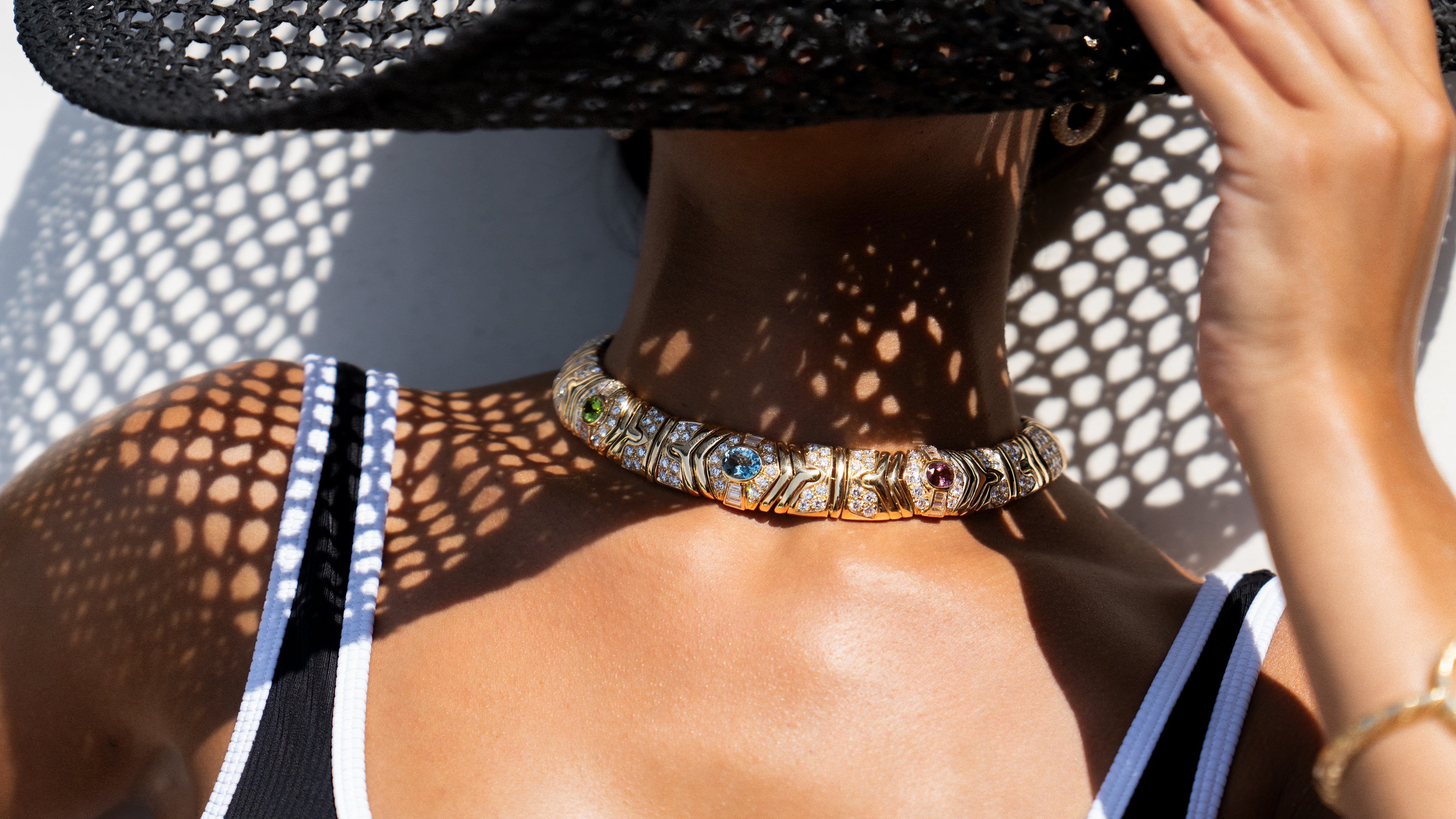C.D. Peacock
From frontier jeweler to one of America’s most respected fine jewelry establishments, C.D. Peacock has enjoyed a fantastic journey.
From Father to Son
Elijah Peacock was a third-generation English silver- and goldsmith. The year he arrived in America and set up shop in Chicago, Illinois, was the same year that the city became incorporated. Only 4,000 citizens were living in Chicago at the time, in what was then considered a frontier town.
Peacock had a small 10’ x 20’ workroom in the back of his shop where he repaired pocket watches, which the store also sold. Other offerings included gold wedding bands, lockets, and gold and silver chains. Watches were a must-have for the well-appointed gentleman, particularly businessmen, whose numbers continued to increase as the city expanded.
Elijah’s son, Charles, was brought into the business at a young age. He began his work in the shop, looking after the fires, delivering purchases to the settlers, and tinkering with and cleaning the watches.
The business continued to prosper, moving to a larger location, which was destroyed in the great Chicago Fire of 1871. Fortunately, the valuables had been stored in the fireproof vault, and the store was able to move elsewhere with its stock intact. About this time, Elijah went into real estate and urban redevelopment, leaving his young son Charles in charge of the growing jewelry business.
Name Change
In 1889, the same year Elijah passed away, the company officially changed its name to C.D. Peacock. The jewelry concern continued to grow, as did the city around it. Each store was a showplace for the fine jewelry, watches, gifts, and housewares it displayed. Verde Antico The decor boasts SSerpentine marble, and the brass doors in the world-famous Palmer House proved to be legendary. The magnificent Art Nouveau style doors, featuring an openwork design that depicts peacocks, were designed and built by Louis Comfort Tiffany for this location.
Over time, luxury goods made an appearence. Soon Chicagoans had access to traditional Sheratonian tea services, Boardman coffee sets, trays, hot-water dishes, and candlesticks, bringing old-world elegance to the burgeoning city.
Early clientele included inventors Cyrus McCormick and George M. Pullman, businessmen Potter Palmer and Marshall Field, and perhaps its most famous patroness, Mary Todd Lincoln.
Shop the Catalog
The first C.D. Peacock catalog debuted in 1893, the same year as the World’s Columbian Exposition. Visitors to the grand event were invited to view Peacock’s extensive collection of jewelry and silverware. They made a “specialty of diamonds and colored gems in all kinds mounted to order in original and artistic settings.” They also advertised an assortment of “novelties in gold and silver” as “the largest to be found in this country.”
Upon Charles’ death in 1903, his two sons, Robert and Walter, took over and continued to grow the business.
There was a Peacock in the House until 1969 when the establishment was sold. The jeweler is currently still operating in the city where it was born. Prominent athletes, entertainers, and other celebrities from across the country continue to frequent the oldest guild jeweler in the Chicago area.
Promoting the Business
Give a Present that has a Future. A Peacock Diamond. – from an early 20th Century magazine advertisement.
C.D. Peacock early on recognized the potential of diamonds, both as gifts and in wedding jewelry. Stating that “a diamond never wears out, either its welcome or itself,” Peacock touted the diamond’s investment value and heirloom possibilities along with its sentimental value. The firm also alluded to the complexity of selecting a diamond and the importance of choosing a jeweler with expertise. Their “friendly, welcoming atmosphere” has been an essential component of their business model.
Christmas as a gift-giving opportunity had clearly been established by 1914, when C.D. Peacock offered a variety of pocket watches, brooches, and pendants, along with a whole host of accessories, such as gold thimbles, “cuff buttons,” and opera glasses. Expert artisans made gifts with quality materials.
Peacock was at the forefront of the Art Deco movement, offering styles fashioned in platinum with plenty of diamonds, some with the added pop of colorful gemstones.
The jeweler’s overall theme continues to be: Offer the most exceptional quality jewelry at a fair price; employ a knowledgeable sales staff, and ensure the clientele feel relaxed and welcome.
